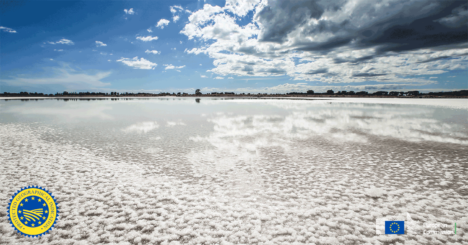The European Commission approves a new geographical indication for France, „Sel de Camargue” / „Fleur de sel de Camargue”
 The European Commission approved the inclusion in the register of protected geographical indications (PGI) of „Sel de Camargue”/””, a salt from the Petite Camargue geographical area.
The European Commission approved the inclusion in the register of protected geographical indications (PGI) of „Sel de Camargue”/””, a salt from the Petite Camargue geographical area.
„Sel de Camargue” and „Fleur de sel de Camargue” are sea salts, produced by the natural evaporation of seawater, and crystallising only under the action of the sun and wind. No treatment other than drying is permitted.
„Sel de Camargue” and „Fleur de sel de Camargue” are produced exclusively in the Petite Camargue geographical area. Salt production in this area dates back to the Middle Ages. Thanks to its well-defined summers and north and north-westerly winds, the Mediterranean climate of this area is favourable to the crystallisation of salt and to specific harvesting methods. The Mediterranean climate means that the area benefits from plenty of sunshine and hot summers, which means that salt production is abundant. The sandy soils on which the seawater flows and the frequent renewal of the water mean that the brine contains very few insolubles, hence the white colour of Camargue salt and fleur de sel. This white colour is characteristic of these products.
This new designation will be added to the list of 1,686 agricultural products already protected. The list of all protected geographical indications can be found in the eAmbrosia database. Further information is available online on the Quality Schemes website and on our GIView.










